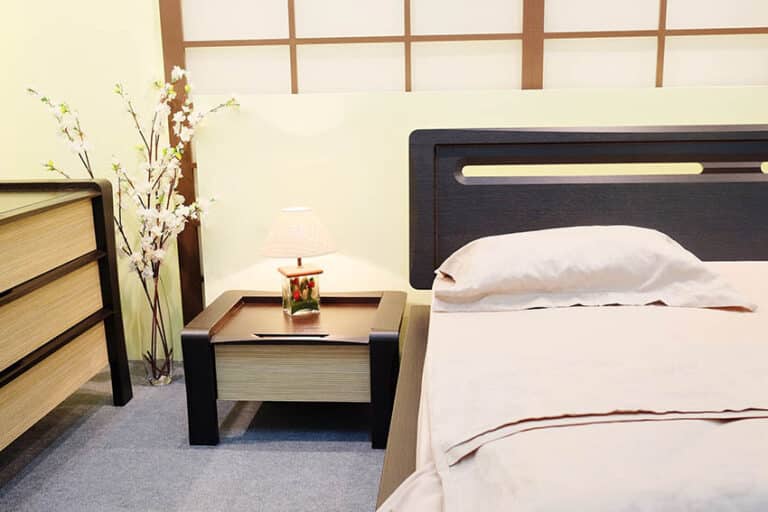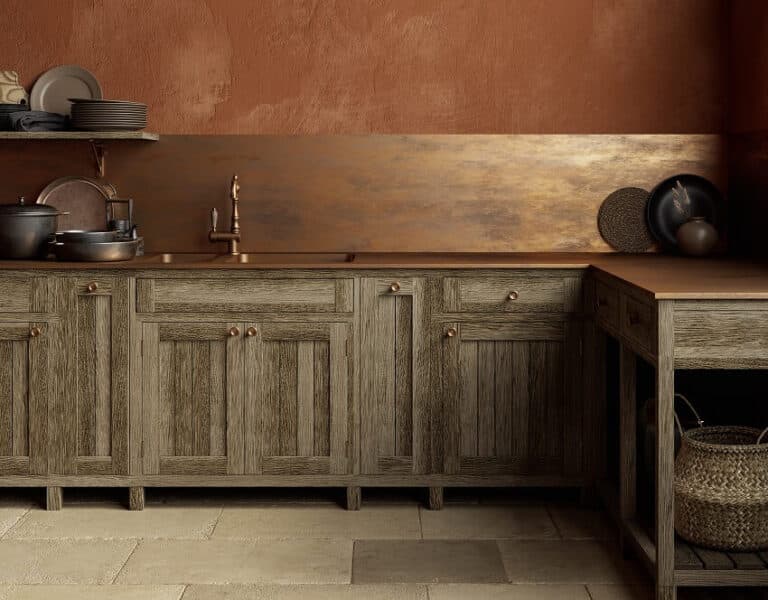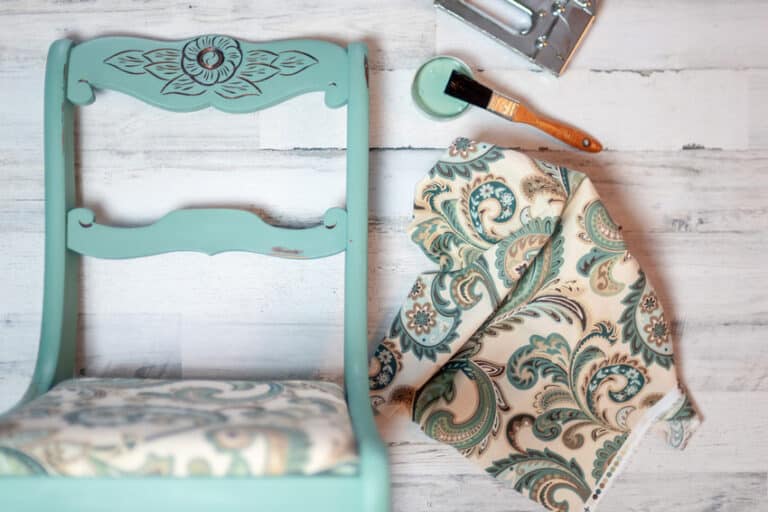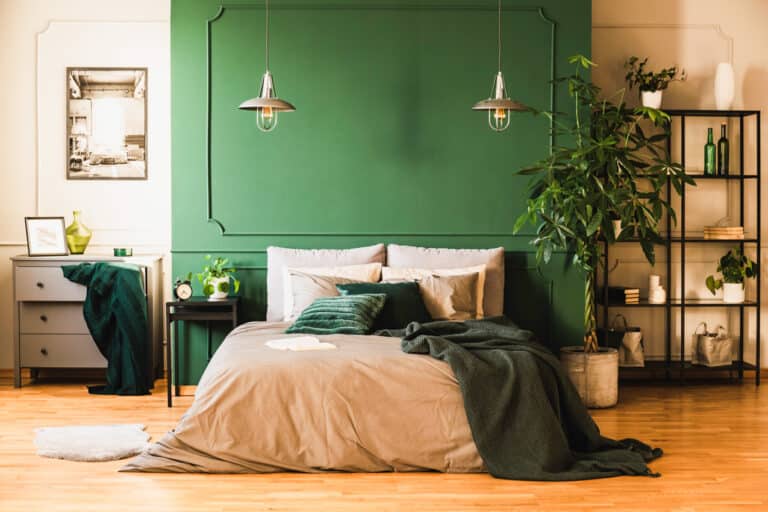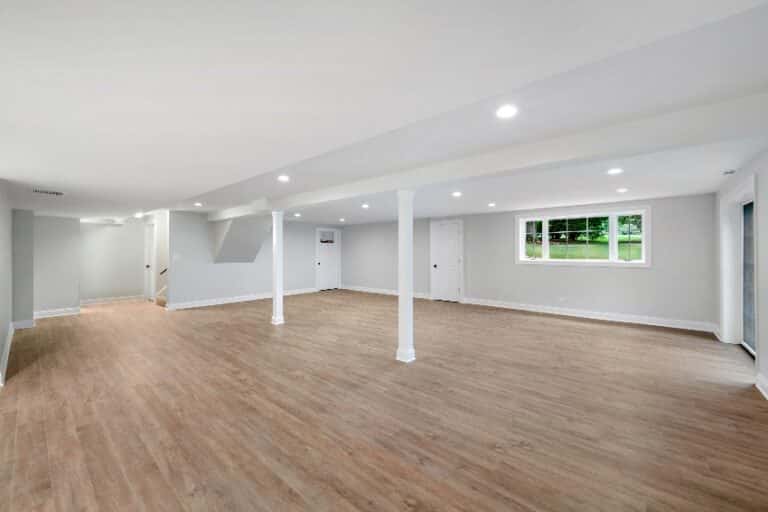How Can I Make My Ceiling More Attractive? 9 Options

Dubbed the fifth wall in interior design, ceilings present an opportunity to further elevate a space. Placed up high, plus the amount of visual coverage, the ceiling is one of the most noticeable elements in a room. However, the entry of modern and contemporary interiors has led people to strive for that minimalistic look, leaving most household ceilings today as plain and untouched spaces.
But being “in” doesn’t necessarily need to be boring. Instead, incorporate the classics with toned-down versions in your home or place of business. With the right stylistic choices, you’ll be able to utilize your ceiling to create a stunning and even personalized aesthetic for your room or space. In this article, we’ll answer the main question many homeowners ask. How can I make my ceiling more attractive?
Fresh Coat Of Paint
A practical and quick way to elevate the look of your ceiling without any major renovations is by painting your room’s ceiling a fresh coat of paint. Not only does it make your ceiling and room overall look more attractive, but it also improves the structural integrity of your ceiling and hides away any imperfections without requiring a major renovation.
Tips:
- Use paint that’s formulated for ceiling application, as it usually dries slowly.
- Using a roller can cover the ceiling faster, while a brush is more controllable when painting edges.
Moldings and Trim
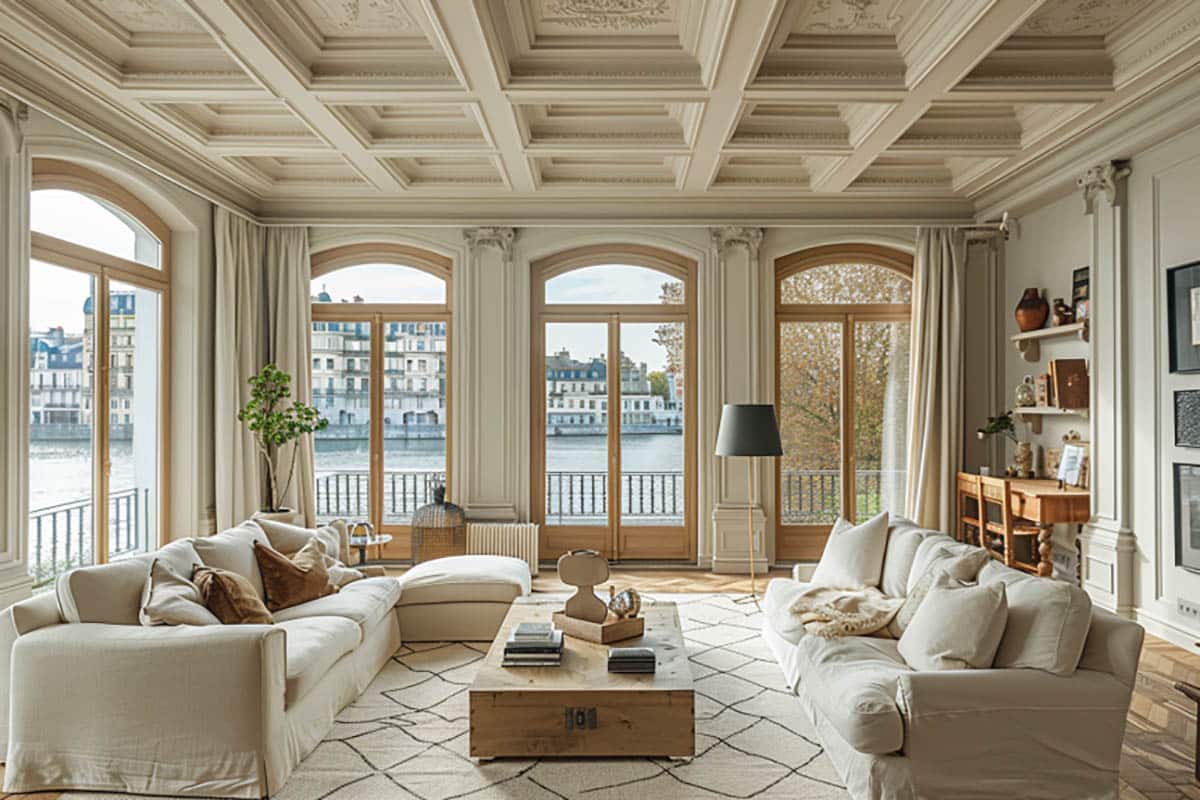
Add architectural molding or trim details for a refined look. From crown to rosette molding, there are a good number of architectural details from the traditional styles that can be incorporated into today’s contemporary interiors. The advantage today is that there are available PVC trims that can be easily installed and removed if you intend to replace your trims. The PVC trims are more affordable and can be installed by anyone with basic DIY skills.
Coffered or Tray Ceilings
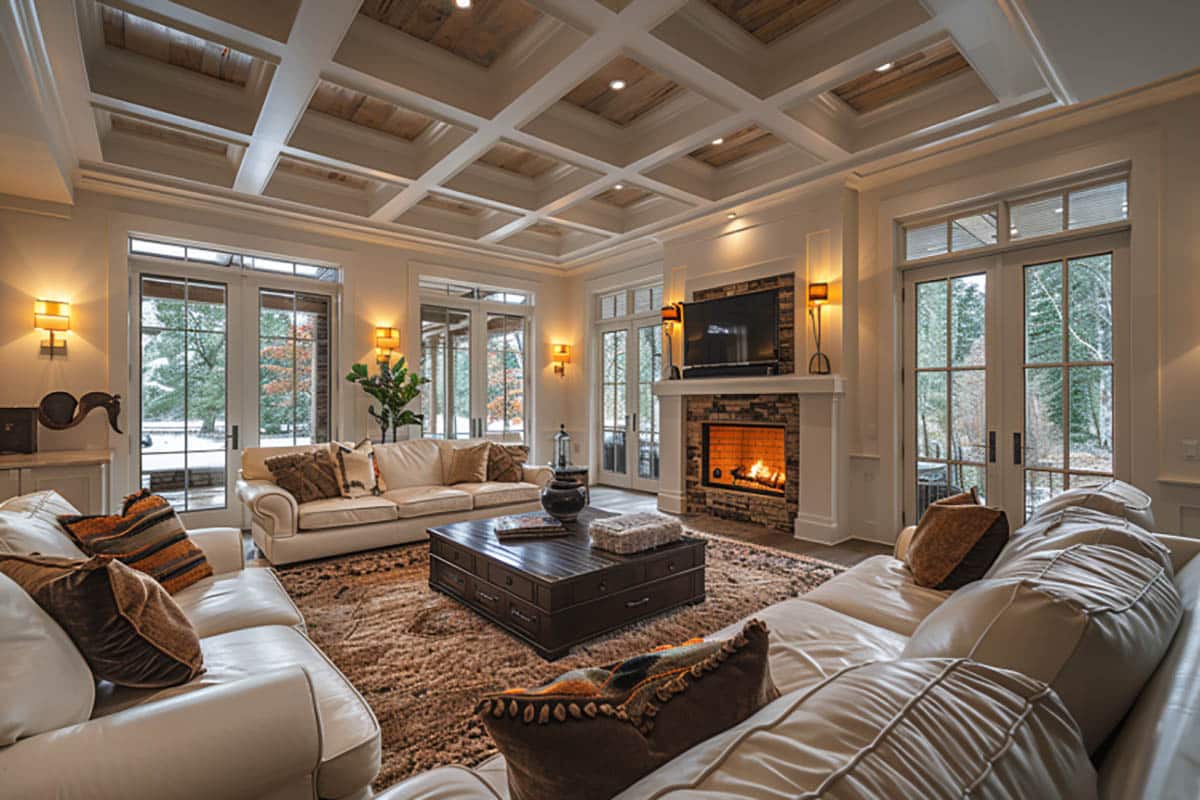
One of the hallmarks of high-end interiors is that coffered or tray ceilings can add depth and interest to a room. This makes these architectural features a fitting addition to important spaces in a house, such as a living, family, or entertainment room. The coffered ceiling showcases recessed areas created by the interlocking grids that usually form square, rectangular, or octagonal-shaped pockets.
The tray ceiling, meanwhile, follows the ceiling perimeter and creates a frame-like appearance. Because of the created 3D panels and frames, lighting strategies can be incorporated, such as the cove lighting that is popular with your tray ceiling designs.
Tips:
- As a rule of thumb, panels or any other architectural feature installed on the ceiling should not take up more than 50% of the ceiling.
- The larger the space, the lesser the coverage of your architectural feature is recommended. Except in restaurants, smaller restaurants can have a ceiling architectural feature of up to 50%, while larger restaurants can have around 35 to 40% coverage.
Light Fixtures
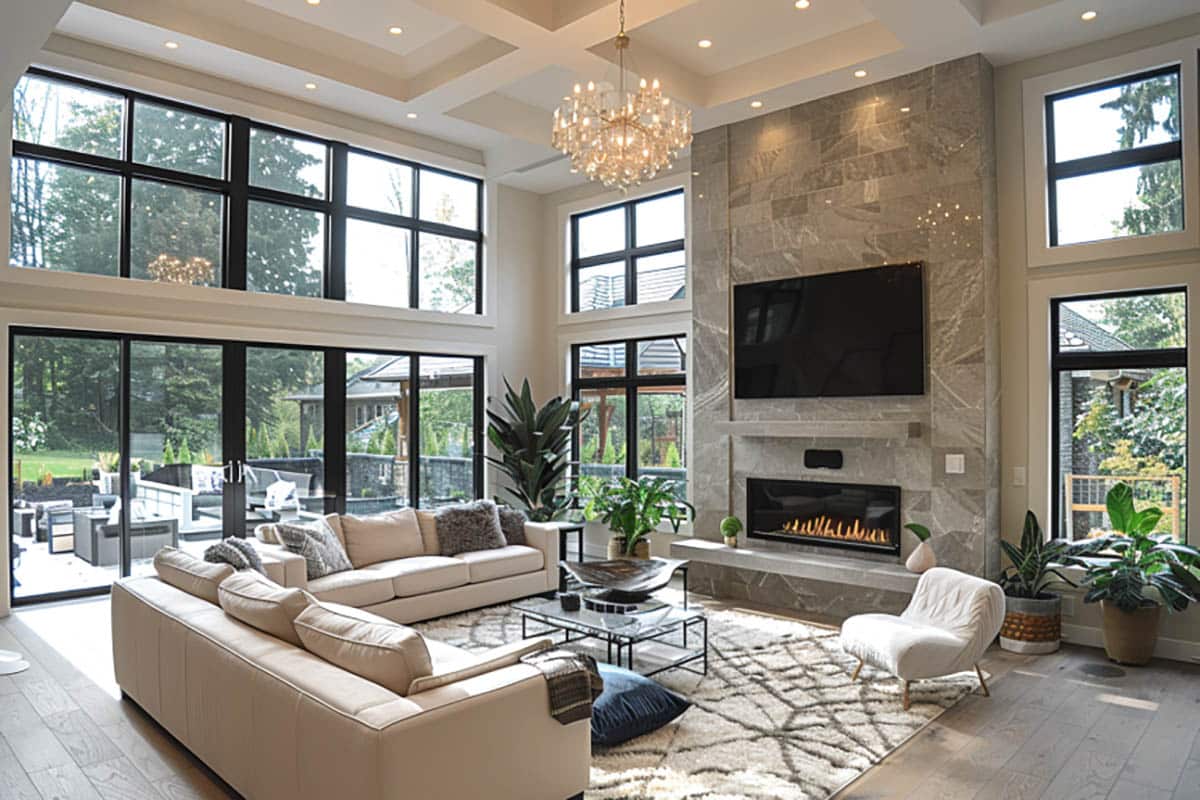
Aside from providing light in rooms and spaces, lighting fixtures add visual interest to the ceiling as they draw the eye up toward the said area. It’s an easy way to spruce up your ceiling without a major renovation. Lighting fixtures, especially chandeliers, pendant fixtures, and other luminaires that are placed at the center of a room, can also pull together elements.
Wooden Beams
Exposed beams can add warmth and rustic charm. Like coffered and tray ceilings, wooden beams are architectural features that are classic elements that can add character and richness to a ceiling area. These are often seen in farmhouses and other more rustic and traditional homes, but they can also be incorporated into modern styles with the right design. There are also faux ceiling beams that create the illusion of having beams throughout the ceiling.
Shiplap
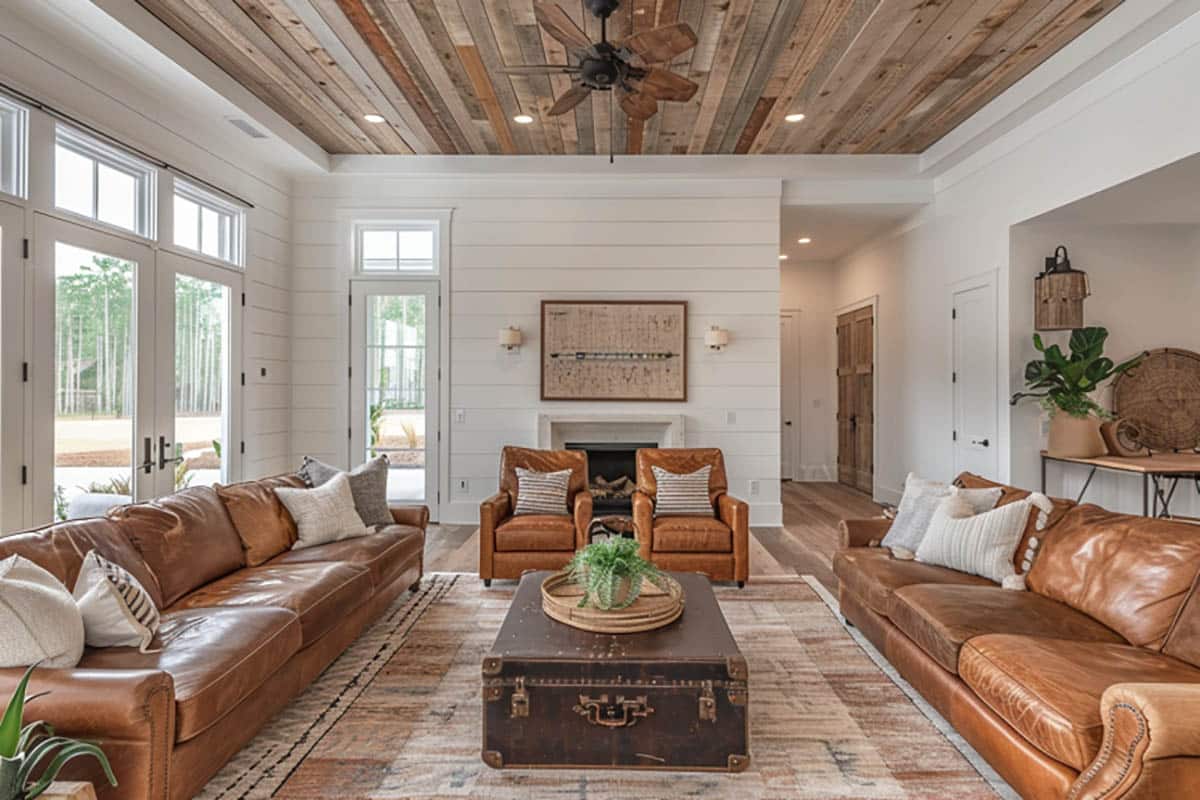
If you’re a fan of a coastal, rustic or farmhouse style you can install shiplap boards which can work excellent in living rooms, bedrooms, bathrooms and kitchens. You can paint the boards, stain them or leave them natural depending on the style you’re going for. The most common material options are wood, either cedar or pine, but MDF, PVC and fiber cement are also popular choices.
Wallpaper or Decals With Patterns Or Textures
Whether opting for the adorable for your nursery room or a mesmerizing ceiling, wallpaper, different textures or decals are perfect options when you’re looking for a more detailed and specific design. With improved materials such as waterproof textiles and high-resolution digital prints, ceiling designs with wallpaper can look seamless. These can further transcend your space and improve the overall aesthetic of your room.
Mirror or Metallic Finishes
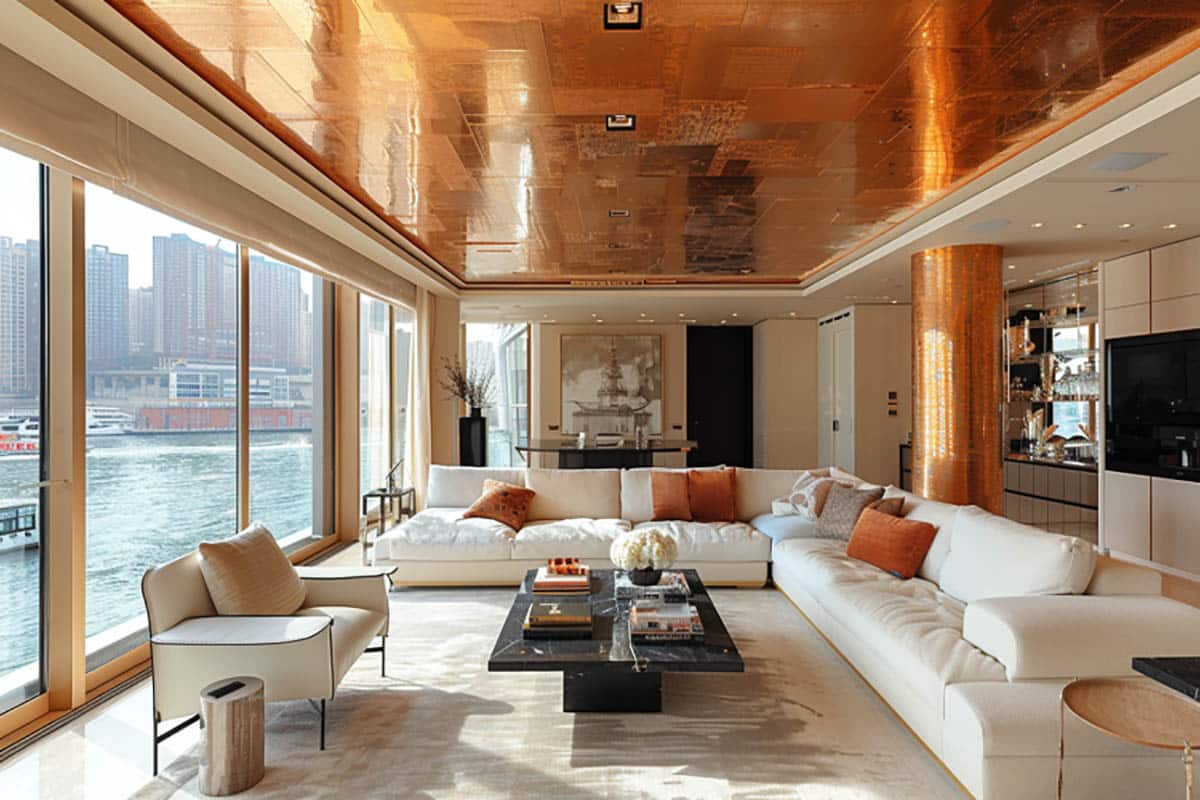
Reflect light and add a touch of glamour with reflective finishes. Mirrors and other reflective surfaces have always been associated with luxury and sophistication, but more than adding sheen, metallic surfaces also have more practical uses. The timeless element, when applied to the ceiling, can give the impression of having a larger area. Mirror tiles make it easy to install in any shape or size of the ceiling, as you can cut the tiles to make around obstructing architectural elements such as beams or moldings.
Add Decorative Soundproofing Panels
Soundproof panels improves acoustics while adding aesthetic richness. Unlike your generic acoustical ceiling tiles from the 1960s through the 1980s, today’s soundproofing panels come in a wide range of attractive and functional designs. From the modular hexagonal-shaped soundproofing tiles to the multicolored wave panels, there’s a perfect overhead design for your taste.


